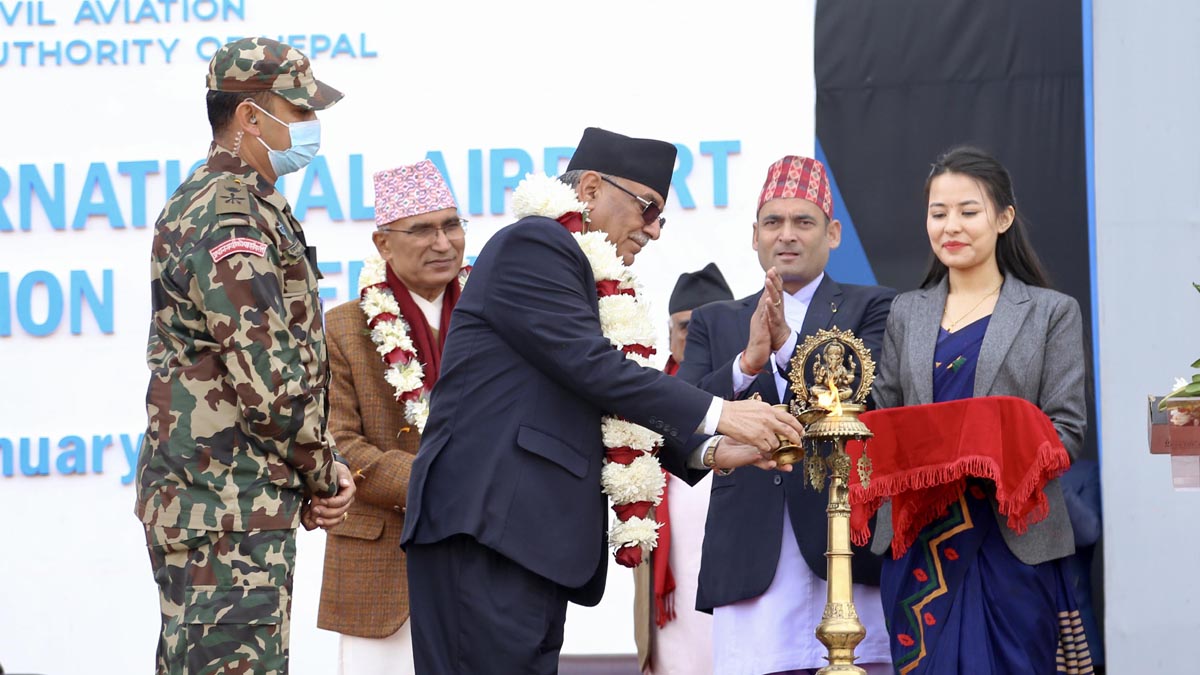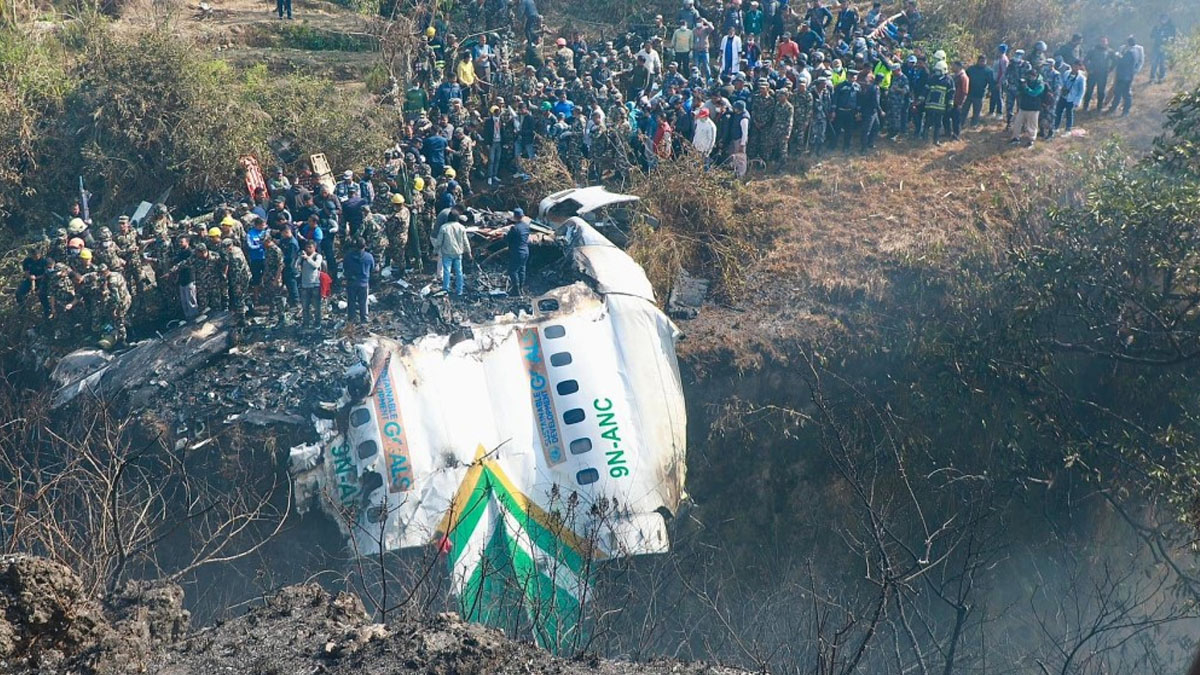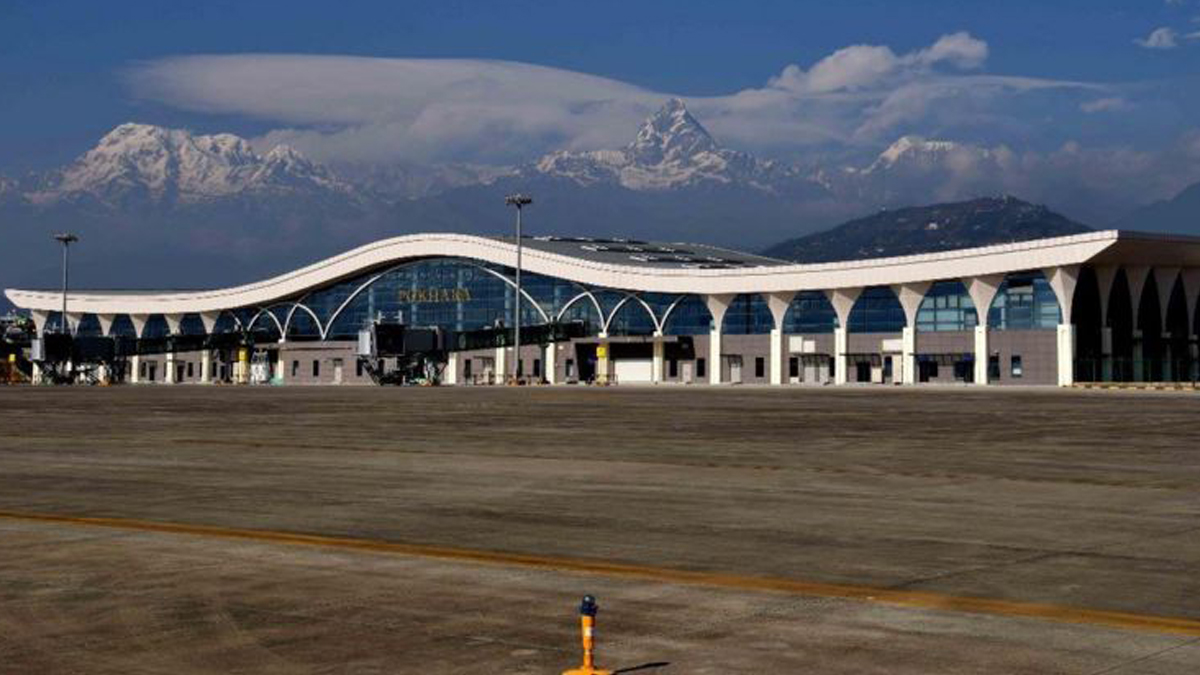
ILS installed at PRIA only after Yeti air crash
It has been revealed that the Pokhara International Airport, built by a Chinese company with a loan from a Chinese bank, was handed over without installing the main equipment.
The Instrument Landing System (ILS), one of the main equipments required for aircraft landing at the airport, was installed only after the handover of the airport.
A plane of Yeti Airlines had an accident in Pokhara before the installation of Pokhara Regional International Airport (PRIA).
Airport spokesperson Jashoda Subedi informed epardafas that the device was installed at the airport on February 23 while the Prime Minister Pushpa Kamal Dahal inaugurated the airport on January 1. The plane of Yeti Airlines crashed near the airport on January 1, 15.
During the inauguration of the airport, the Chinese officials said that it was designed and built according to Chinese and ICAO standards. Ji Rong, Counsellor at the Department of Asian Affairs of Chinese foreign ministry had said that all standards have been met at the airport. However, in reality, the Chinese side missed the installation of the main equipment.
The new #airport in Pokhara, the third international airport in #Nepal, was put into operation on Sunday. It was designed and built on #Chinese and ICAO standards and it will boost national and regional development. pic.twitter.com/eEkdJbTW9x
— Ji Rong嵇蓉 (@JiRongMFA) January 3, 2023
On January 15, the plane of Yeti Airlines had an accident while approaching the airport. According to the initial report of the inquiry committee formed by the government to investigate the accident, the initial cause of the plane crash was that the propeller blades of the crashed airlines were in the feathered position which caused the aircraft to lose thrust and fall. According to experts, the propellers on an aircraft ‘feather’, which means the propeller blades are rotated, to reduce drag when engine power is lost. In this position, the plane is not being pushed forward and it stalls.
All 72 people on board were killed in the accident in Pokhara that occurred in clear weather.
In aviation, the instrument landing system (ILS) is a precision radio navigation system that provides short-range guidance to aircraft to allow them to approach a runway at night or in bad weather. In its original form, it allows an aircraft to approach until it is 200 feet (61 m) over the ground, within a 1⁄2 mile (800 m) of the runway.
According to the former Director General of Nepal Civil Aviation Authority Birendra Deuja, ILS is a radio navigation system, which helps the aircraft to land even at night or in bad weather. He said that this device has been installed in some airports in Nepal.
No international airlines have flown so far to Pokhara Airport, which was inaugurated by Prime Minister Pushpa Kamal Dahal ‘Prachanda amidst a grand ceremony.

Only domestic airlines have been flying at this airport, which was built with Chinese loan investment. The perception on the airport has worsened more after the Yeti Airlines crashed on January 15 in Pokhara shortly before landing at the airport.
Challenges With Aviation Safety
Another problem of Pokhara International Airport is birds and wild animals. Even though this problem was mentioned before the construction started, it was ignored. In the eastern part of the airport, there is the Vijaypur river and the Seti river in the south. Just after crossing the Vijaypur river, the runway arrives. But when these two rivers are dirty, dead animals are thrown away and birds are attracted to food, which is a big challenge for the airport.
Airport staff say that this will cause problems in flights and landings. A few days ago, a bird collided with a plane that was landing. There are a lot of foxes in the bushes near the airport. There used to be a problem when foxes entered the airport at night.

Is it Possible to Pay the Debts of PRIA?
The Pokhara International Airport was built with a loan assistance of Rs 22 billion from the Exim Bank of China. The Government of Nepal had signed a loan agreement of 1.37 billion Chinese Yuan with China’s Exim Bank seven years ago. However, the government has been exempted from paying interest on 25 per cent of the loan. It means that the government does not have to pay interest on 344.46 million Yuan while it has to pay 2 per cent interest on the remaining amount. This loan has a grace period of 7 years and is to be repaid in a total of 20 years.
The grace period is ending soon. According to the Civil Aviation Authority of Nepal (CAAAN), it had to pay the first installment of 53.28 million Yuan in March. The second installment should be paid after six months. The authority should repay the loan of Exim Bank twice a year.
As the airport is built in a tourist hub like Pokhara, there is a high possibility that the government can get enough benefits from it. However, solving all the problems seen now will be a big challenge.
Former CEO of the National Reconstruction Authority Dr. Govinda Raj Pokharel says that there is a dark cloud over the possibility of international/domestic flights at Pokhara Airport. He says that it will be difficult for the airport as the trade deficit and public debt are constantly increasing.
Due to the current situation, doubts are also growing if the government will be able to repay the loan from Pokhara Airport’s income. Therefore, the analysts say that emphasis should be placed on more flights and cargo transportation. Due to the geography and location of the airport, only 150-seat Airbus 319, Airbus 320 and Boeing 575 aircraft can land here. That’s why there are various suspicions about the airport.
On December 31, just a day before the inauguration of the Pokhara International Airport (PIA), the Chinese Embassy in Nepal claimed the PIA to be a flagship project of China’s Belt and Road Initiative (BRI).













Comments